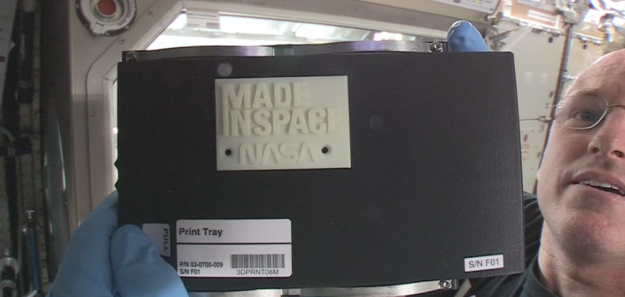
First functional part 3D printed in space
By Design Engineering staff
Additive Manufacturing Aerospace 3D printing Additive Manufacturing MADE IN SPACE NASA slideshowMade In Space, Inc. 3D printer, deployed on ISS last month, heralds new age in space manufacturing.

ISS Commander Barry “Butch” Wilmore holds up the first 3D printed part made in space. (Photo credit: NASA & Made In Space, Inc.)
“When the first human fashioned a tool from a rock, it couldn’t have been conceived that one day we’d be replicating the same fundamental idea in space,” said Aaron Kemmer, CEO of Made In Space, Inc. “We look at the operation of the 3D printer as a transformative moment, not just for space development, but for the capability of our species to live away from Earth.”
The Made In Space 3D printer is part of NASA’s “3D Printing in Zero-Gravity Experiment,” a technology demonstration intended to learn about additive manufacturing processes in reduced gravity. The experiment is being jointly conducted by NASA’s Marshall Space Flight Center (MSFC) and Made In Space, which designed and built the 3D printer for NASA.
 The initial phase of this science experiment will see a selection of test coupons, parts and tools printed to validate design, methodology and technology assumptions. Made In Space will print the same objects on their identical ground unit in order to provide a group of control prints. The ISS prints will be returned to Earth via a future return flight in order for the control prints and microgravity prints to be compared.
The initial phase of this science experiment will see a selection of test coupons, parts and tools printed to validate design, methodology and technology assumptions. Made In Space will print the same objects on their identical ground unit in order to provide a group of control prints. The ISS prints will be returned to Earth via a future return flight in order for the control prints and microgravity prints to be compared.
Once returned to Earth, the testing of the prints will provide data on a wide variety of factors, including tensile strength, torque, and flexibility. This information will allow the Made In Space team to make crucial adjustments to a second 3D printer, scheduled for delivery to the ISS in early 2015.
www.madeinspace.us
